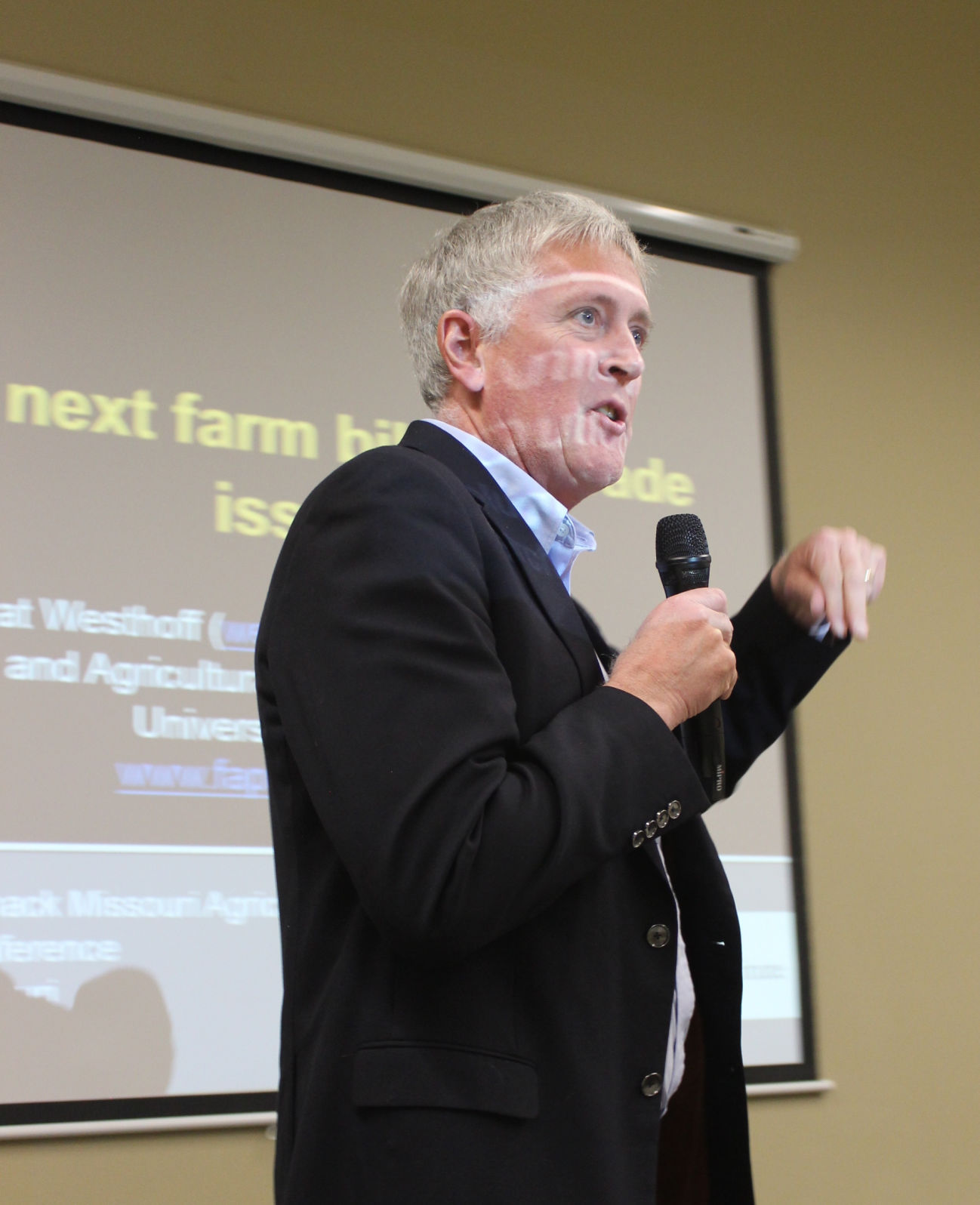If a farm bill is passed by Congress this year it could look a lot like the 2014 bill, according to Pat Westhoff, director of the Food & Agricultural Policy Research Institute, housed at the University of Missouri. Westhoff spoke during the Abner Womack Missouri Agriculture Outlook Conference held March 14 in Columbia, Missouri.
“It is really hard to agree on alternatives so if Congress can’t decide on something in the next few months it will be more or less forced to extend the current bill at least for a while,” Westhoff said.
Westhoff sees eight problems with getting a farm bill done in the next few months. No. 1 is cotton. The 2014 farm bill ended the basic commodity program for cotton and started a new crop insurance program that has not been very popular. A bi-partisan budget act did include a new program for “seed” cotton. Not everyone in cotton country thinks this is the final solution.
Next is dairy. The bi-partisan budget act that is already law included legislation for dairy producers but further tweaks may be needed depending on budget constraints.
Third is the Conservation Reserve Program, on which there is a current cap at 24 million acres.
“There are definitely people with different opinions on CRP around the country but there are strong forces, both in the House and the Senate, that want to see a larger CRP,” Westhoff said.
One proposal is to increase CRP to 28 million or 30 million acres. This would be paid for by reducing the per acre rental payments on new enrollments.
Fourth is crop insurance. The Agriculture Risk Coverage program and the Price Loss Coverage program could be areas of debate in a new farm bill. Some would like to find a way to combine these programs so farmers don’t have to make a choice. Westhoff has not seen a proposal that even has a chance of working.
If Congress simply rolls forward the provisions of the current legislation there will be larger PLC payments on average than ARC payments. If farmers are able to enroll in 2019 or 2020 and the situation with prices remains the same more producers will select the PLC program.
“Up to 70 percent of corn farmers could choose the PLC program given that sort of future, about 60 percent of the soybean farmers might choose PLC and even more for other crops,” Westhoff said.
Orphan programs—or those that do not have a baseline after fiscal year 2018—may be one of the major roadblocks to getting a farm bill done this year, according to Westhoff. The Foundation for Food and Agriculture Research is one such program; there are 38 programs caught in the same position.
Sixth, a major redirection of farm legislation could be a problem. If the House and Senate agriculture committees are allowed to write the next farm bill it will look a lot like the 2014 legislation. However, there are forces that want to see much more radical change in farm bill legislation from both sides of the political spectrum.
“Are the votes there for a continuity-type farm bill and will the president be willing to sign it is the question going forward,” Westhoff said.
The single biggest challenge to getting a farm bill done is the Supplemental Nutrition Assistance Program. Some Democratic votes are needed to get any legislation out of the House, according to Westhoff. SNAP could get tied up in welfare reform politics.
The final challenge? The calendar is working against getting the farm bill done in 2018. This is an election year and Congress is still working on an appropriations bill.
“It is not certain to me that a bill will get done in 2018,” Westhoff said.
This year will be the third straight year of low income for farmers across the board. Farm income will be half of what it was in 2013, according to Westhoff.
“We expect a little improvement in 2019 with prices a bit higher for crops but not enough to offset the long term trend,” Westhoff said. “Once you correct for inflation net real farm income is relatively flat in inflation-adjusted dollars after 2019.”
The farm to debt ratio has been around 16 percent for the last two years. This improves slightly going forward but not dramatically better. There will be continued pressure on farm finances.
“The combination of continued low returns to crop production and not fantastic returns to livestock production and higher interest rates will put pressure on farmland values,” Westhoff said.
He expects farmland values to dip down the next three to four years before recovering in the following years. The nationwide average for all crop and pasture land will stay around $3,000 an acre.
Considering all of these factors Westhoff said this is not a repeat of the 1980s.
Doug Rich can be reached at 785-749-5304 or [email protected].


